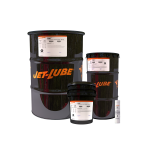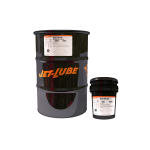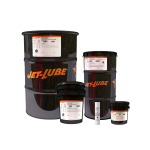

Ask the Expert: How Do I Select the Right Food-Grade Lubricant?
Posted on 08/14/23 in: Industry News | Food & Beverage | Author: An Interview with Jet-Lube's Technical Manager, Steve Ingram & Noria Corporation
Food-grade lubricant selection is a vital part of successful food and beverage manufacturing. Though it may seem trivial, choosing the wrong lubricant in this setting can result in detrimental effects on machine health and, more importantly, human health, as the products can become contaminated with harmful chemicals. I got a chance to sit down with Steve Ingram, the Technical Manager at Jet-Lube, to delve into the crucial aspects of choosing suitable food-grade lubricants for your equipment, addressing the unique challenges posed by extreme temperatures and uncovering the essential storage and handling protocols to maintain product integrity. As demands for food safety continue to rise, understanding the intricacies of food-grade lubricants is paramount for ensuring the seamless operation of machinery in food processing plants.
Q: What are the key considerations when selecting a food-grade lubricant for industrial applications?
A: Firstly, ensure that the lubricant meets the relevant food safety regulations and standards in your region, such as those set by the FDA or the European Union. Look for lubricants that are explicitly labeled as "food-grade" or meet designations like H1 (incidental food contact) or H3 (food-grade solvents). Secondly, prioritize lubricants that are non-toxic, odorless, and tasteless to avoid any potential contamination of the food product. And finally, consider the specific application requirements and choose a lubricant suitable for the intended use. Different food processing equipment may require other lubricant properties, such as high or low-temperature resistance, water resistance, or compatibility with certain materials like rubber or plastics.
Q: Can you explain the importance of lubricant compatibility with different food processing equipment materials, such as plastics, metals, and seals?
A: Incompatibility can result in equipment malfunction, increased friction, and premature wear, adversely affecting performance and efficiency. For example, some lubricants may be incompatible with certain plastics, causing them to swell, soften, or crack. Incompatible lubricants can also corrode metals or deteriorate seals, leading to leaks or contamination risks. Choosing a lubricant that is compatible with the specific materials used in the equipment helps to maintain the integrity and longevity of the equipment.
Q: What are the common challenges or issues faced when using food-grade lubricants in high-temperature or extreme cold environments?
A: In high-temperature environments, food-grade lubricants may experience thermal degradation, oxidation, and volatility, leading to reduced lubricating properties and increased friction. Extreme cold conditions can cause viscosity changes and solidification, hindering lubricant flow and effectiveness. To address these challenges, use synthetic lubricants for high-temperature applications and low-temperature formulations for extreme cold. Regular monitoring and maintenance are essential in high-temperature environments, while preheating equipment can aid lubricant flow in extreme cold.


